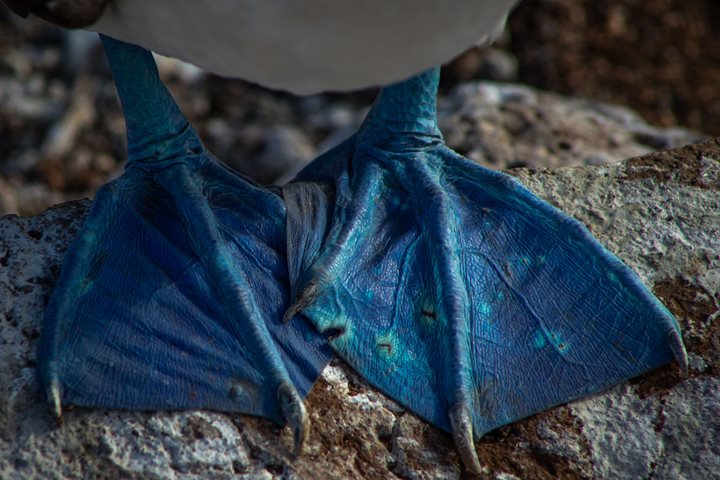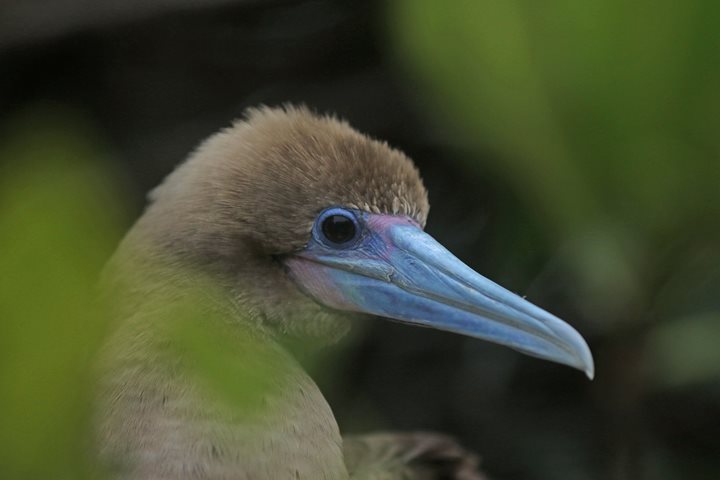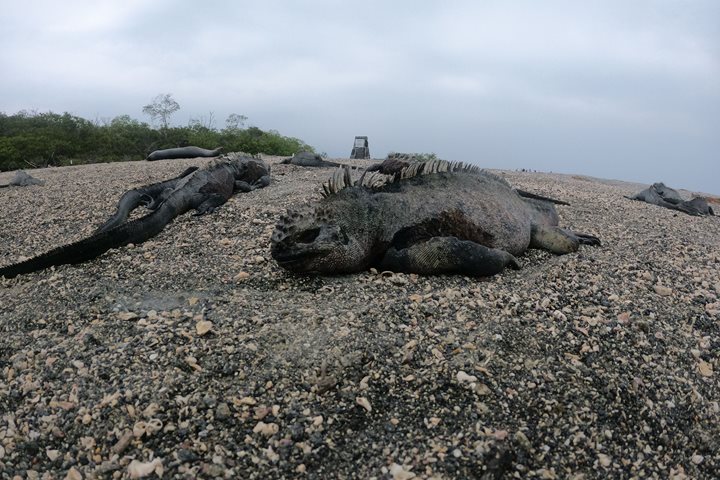This time, we navigated towards the western side of the enchanted archipelago. The ocean was calm and there was a pleasant breeze coming from along the titanic volcanoes of Isabela Island. The National Geographic Islander navigated along the coastline of Isabela, allowing us to enjoy the incredible geology of this young island, with its volcanoes meeting the sea.
After breakfast, we crossed the equator line and were baptized with the permission of King Neptune. All of us became shellbacks after crossing the equator.
We arrived at Punta Vicente Roca (the northern part of Isabela) and had a Zodiac ride, where we were able to spot a group of around 25 Galapagos penguins fishing and surfacing next to our Zodiac. We also saw flightless cormorants nesting along the coast. This is also an outstanding visitor site with stunning geological features.
Some other Galapagos penguins were just sun bathing on the black lava rocks. We decided to snorkel as part of our second outing for the day, and this time the penguins got a bit closer to us underwater as they were fishing and having a buffet right in front of our eyes. We encountered many Pacific green sea turtles and swam with them for awhile, too. This is the only specie of turtle that actually nests in the Galapagos islands.
After lunch we repositioned our vessel and anchored off the coast of the youngest island of the Galapagos, at Punta Suarez on Fernandina Island. As soon as we had a dry landing, we found the land of dragons in front of our eyes. Hundreds of large marine iguanas welcomed us to enter the most preserved island in the enchanted archipelago. The black marine iguanas were covering large areas of the path to bask under the sun and sneeze salt out of their nostrils - this is the only sea-faring iguana in the world. As we walked around, a Galapagos hawk was spotted on the red mangrove trees. A lucky sight.







